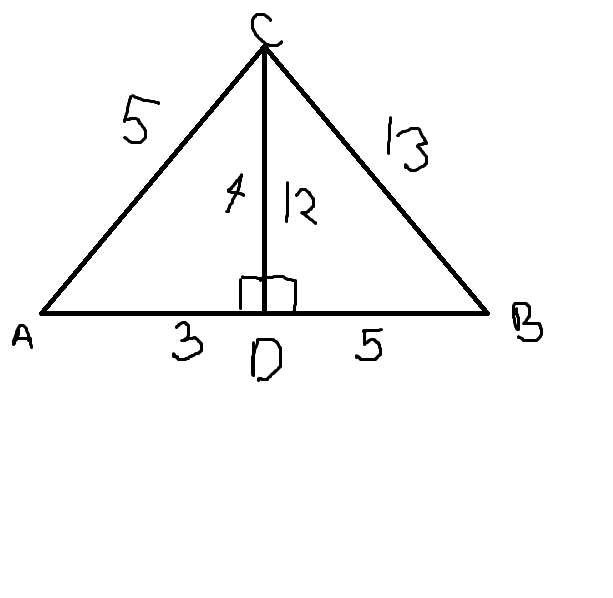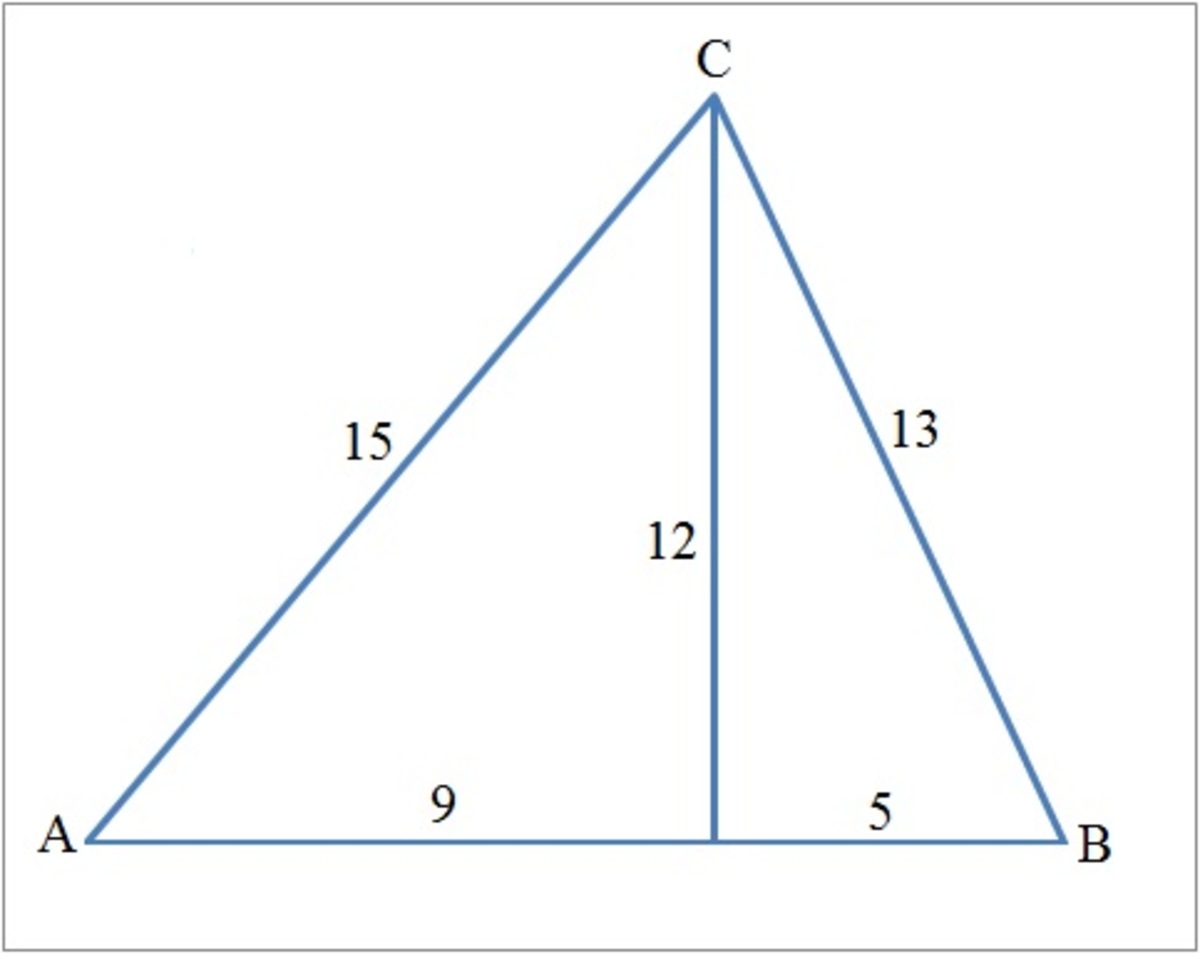Rule of sign
For a triangle A B C , we have sin ( A ) = 5 4 , sin ( B ) = 1 3 1 2 . Which of these values are possible values of sin ( C ) ?
This section requires Javascript.
You are seeing this because something didn't load right. We suggest you, (a) try
refreshing the page, (b) enabling javascript if it is disabled on your browser and,
finally, (c)
loading the
non-javascript version of this page
. We're sorry about the hassle.
5 solutions

In the image, C D is constructed so that C D ⊥ A B .
sin ( A ) = A C C D = 5 4
cos ( A ) = A C A D = 5 3
sin ( B ) = B C C D = 1 3 1 2
cos ( B ) = B C B D = 1 3 5
sin ( C ) = sin ( ( 9 0 − A ) + ( 9 0 − B ) ) = sin ( 1 8 0 − ( A + B ) = sin ( A + B ) = sin ( A ) cos ( B ) + cos ( A ) sin ( B ) = 5 4 × 1 3 5 + 5 3 × 1 3 1 2 = 6 5 5 6
sin b = 12/13 multiplying it by 5 then sin b = 60/65 sin a =4/5 multiplying it by 13 then sin a = 52/65 . so we can conclude from sin (theeta) = opposite/ hypotenuse , that 65 is hypotenuse . so the options may be B or C by taking a chance i chose the option 56/65 its correct PLEASE POST A BETTER SOLUTION
The problem can also be solved by equating the opposite sides (the altitude) of ∠ A and ∠ B see the diagram below.

Then by using Cosine Rule, we have:
1 4 2 cos ( C ) ⇒ sin ( C ) = 1 5 2 + 1 3 2 − 2 ( 1 5 ) ( 1 3 ) cos ( C ) = 2 ( 1 5 ) ( 1 3 ) 1 5 2 + 1 3 2 − 1 4 2 = 6 5 3 3 = 1 − ( 6 5 3 3 ) 2 = 6 5 5 6
Moderator note:
This solution makes the assumption that the triangle must be of a certain form.
There are actually 2 possible triangles which satisfy the conditions of the question. As it turns out, the sin of the third angle is the same, but the cosine of the third angle would be different.
ABC is a triangle so total 180 degree
so sin inverse(4/5)+sin inverse(12/13)=120.51
180-120.51=59.49
sin(59.49)=0.86154
which is 56/65
Moderator note:
How would you know that sin(59.49)=0.86154 is EXACTLY equals to 56/65?
First calculate cos ( A ) and cos ( B ) using sin 2 θ + cos 2 θ = 1
cos ( A ) = 1 − ( 5 4 ) 2 = 5 3 cos ( B ) = 1 − ( 1 3 1 2 ) 2 = 1 3 5
We only use the angles in the first quadrant to make sure that the triangle exists. Now:
A + B + C = π C = π − ( A + B ) sin ( C ) = sin ( π − ( A + B ) ) sin ( C ) = sin ( A + B ) sin ( C ) = sin ( A ) cos ( B ) + sin ( B ) cos ( A ) sin ( C ) = 5 4 ⋅ 1 3 5 + 1 3 1 2 ⋅ 5 3 sin ( C ) = 6 5 2 0 + 6 5 3 6 = 6 5 5 6